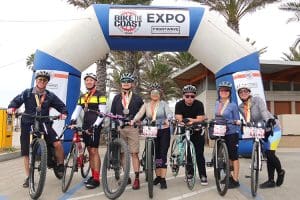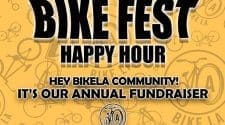Urban commuting requires careful consideration of transportation options to navigate busy streets and traffic congestion effectively. Understanding the benefits of traditional bicycles and seated e scooters can help you choose the ideal urban transport solution.
Living in bustling urban environments often means dealing with congested roads and limited parking spaces. The need for efficient and practical transportation is more pressing than ever. As you weigh your options, consider how a seated electric scooter might offer a compact solution for navigating tight city streets. Meanwhile, traditional bicycles provide a sustainable and health-conscious way to travel short distances while contributing to overall fitness.
Benefits of using a traditional bicycle in city centers
Traditional bicycles have long been a staple in urban commuting due to their maneuverability and health benefits. As a cyclist, you can weave through traffic effortlessly, making it easy to reach your destination quickly without being bogged down by congestion. Unlike motor vehicles, bicycles require no fuel, making them an eco-friendly option for the environmentally conscious commuter.
Additionally, cycling provides an excellent form of exercise, promoting cardiovascular health and overall well-being. Incorporating a bicycle into your daily routine allows you to burn calories while reducing stress levels. With dedicated bike lanes in many cities, cyclists enjoy safer routes that further enhance the appeal of this mode of transport.
The cost-effectiveness of bicycles also adds to their allure. Unlike cars or electric scooters with seats, bicycles entail minimal maintenance costs and no fuel expenses. This makes them an attractive choice for budget-conscious individuals seeking reliable urban transport.
Advantages of a seated electric scooter in urban settings
Seated electric scooters have emerged as a popular alternative for urban commuters seeking convenience and efficiency. These scooters are compact and lightweight, allowing for easy navigation through crowded streets and tight spaces. Their small size also translates to effortless parking, which is often a challenge in densely populated areas.
The convenience of seated electric scooters extends to their operation; they require minimal physical effort compared to bicycles. For those with limited mobility or who prefer a less physically demanding commute, these scooters offer an appealing solution. With rechargeable batteries, they provide an eco-friendly alternative to traditional motor vehicles without sacrificing speed or range.
The quiet operation of seated e-scooters contributes to reduced noise pollution in urban areas. Their increasing popularity has prompted many cities to incorporate dedicated scooter lanes alongside bike lanes, enhancing safety for all road users.
Comparing traditional bicycles and seated electric scooters in city environments
Both traditional bicycles and seated electric scooters have distinct advantages that cater to different commuting preferences and needs. In terms of maneuverability, bicycles excel in agility and are adept at navigating through slow-moving traffic, thanks to dedicated lanes available in most cities. However, their reliance on physical exertion might not suit everyone.
Electric scooters with a seat shine in terms of ease of use and minimal physical demand. They allow you to maintain a consistent speed without exerting effort while benefiting from features like built-in lights and storage compartments that add convenience during your commute. However, charging infrastructure availability may influence your decision if long-distance commutes are frequent.
Parking is another consideration; bikes often benefit from widespread racks throughout urban centers, but require more space than compact scooters do when stored at home or work locations.
Your choice between a traditional bicycle and a seated electric scooter should align with your specific commuting needs and preferences. If health benefits are paramount, cycling may be the way forward due to its exercise potential. Conversely, if convenience and minimal effort are key priorities, then opting for an electric scooter with a seat could be more suitable.
Consider testing both modes before committing; many cities offer rental services that allow firsthand experience without significant upfront investment. Evaluate local infrastructure availability, such as bike lanes versus charging stations, when deciding which option best meets your requirements.
Ultimately, choosing between these transportation methods depends on balancing factors like cost efficiency against environmental impact while accommodating personal lifestyle choices within urban landscapes effectively.
No products found.
















